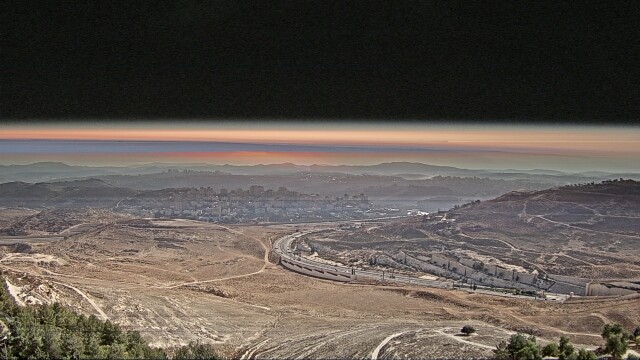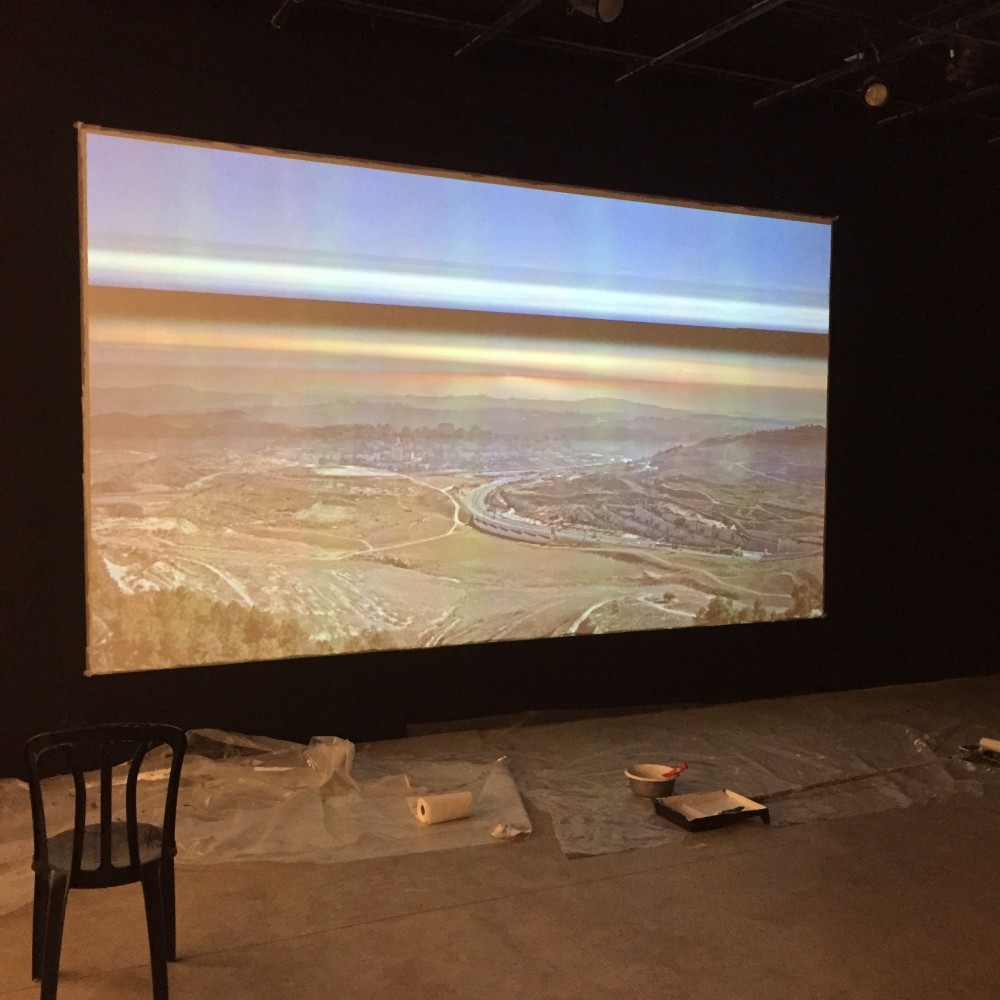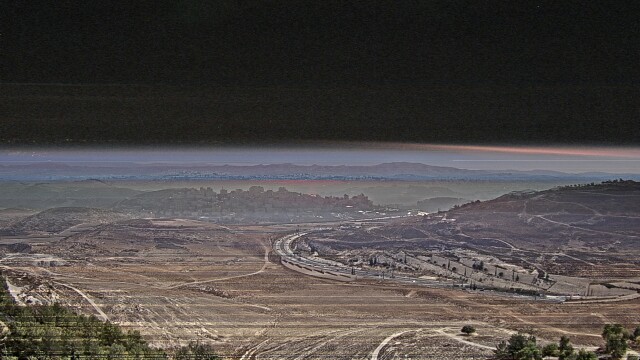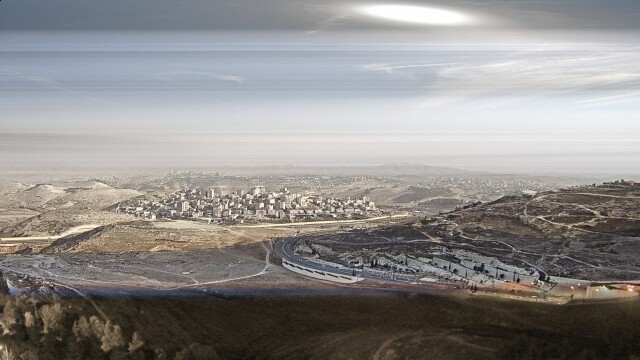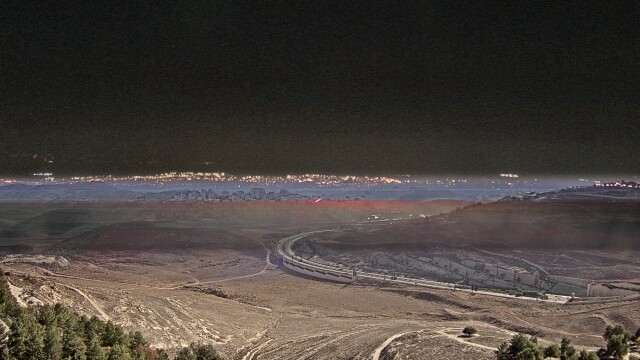2016-17
In October 2016 a network camera was installed on Mount Scopus in Jerusalem looking east across the West Bank towards the Jordanian Mountains, a deeply historic and biblical landscape that has been written about and referenced over millennia.
It is also an extremely complicated and controversial territory which includes Israeli constructed highways, the separation wall and Arab habitats. In the centre of the picture you can see the Arab town of Al Za’im which lies behind the separation wall. The road you see curving to the right is a new road to Ma’ale Adumim, a large Israeli settlement. Faraway is the peak of Mount Nebo, where Moses stood to view the Promised Land and closer the Mount of Olives. Behind which out of view lies the Dead Sea.
The camera constructed images pixel by pixel, line by line from the top left to the bottom right hand corner of the frame so that each complete image represents just over twelve hours of time. The twelve hour timeframe for each image loosely refers to Halachic time, an ancient Hebrew timeframe which divided the daylight portion of the day into twelve equal hours. The camera remained in situ until May 2017, recording the the seasons, and the weather, from Autumn through to Spring. Images were saved at regular intervals, forming an extensive image archive.
The work was presented as a live projection at Tel Aviv Artists Studio Gallery from 14 January – 18 February 2017 along with a series of prints from the work.
LAND is part of an ongoing series of works which construct images from remote landscapes over time, and the first in the series to be located outside the UK.
Earlier works in the series combined digital technologies with the classical traditions of English landscape painting.
These included Seascape, a solo exhibition at the De La Warr Pavilion, Bexhill-on-Sea co-commissioned by Film and Video Umbrella, where a series of gradually unfolding digital seascapes were created using imagery captured in real time by network cameras installed at five vantage points across the South East coast of England to present a visual exploration into the natural cycles of tide, time and light; and Fenlandia and Glenlandia, a series of ‘pixel landscapes’ exploring the relationship between landscape and technology over time. Whilst Fenlandia recorded minute changes in the constructed Fen landscape of eastern England, Glenlandia instead looked out over a place where technology is also implicitly embedded in the landscape – Loch Faskally, a manmade loch which services the hydroelectric dam in Pitlochry in Perthshire, Scotland.
Images from LAND were posted regularly
on twitter
instagram
and facebook
Many thanks to:
Dr Vered Zafran Gani, Curator, Tel Aviv Artists’ Studios Gallery for proposing this exhibition and making it possible
Thanks also to: Eitan Buganim, and Jasmin Vardi, Tel Aviv Artists” Studios Gallery; Eli Zafran; and Avi Sabaah and Bezalel Academy of Art and Design, Jerusalem for generously hosting the camera for the year.
Programming and network technology developed with Matthew Jarvis
Here are some more images from the archive:
